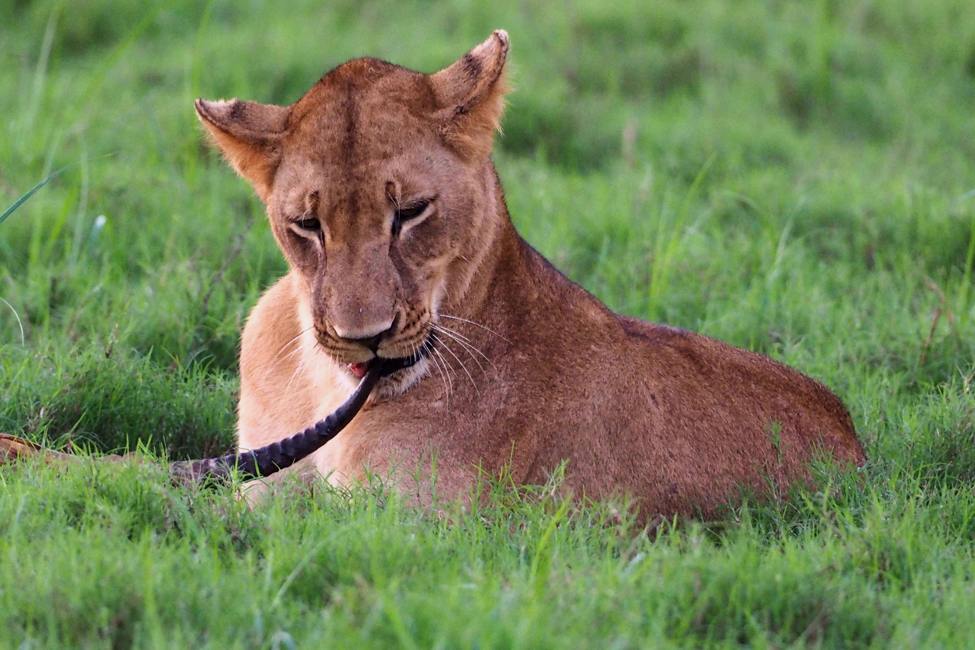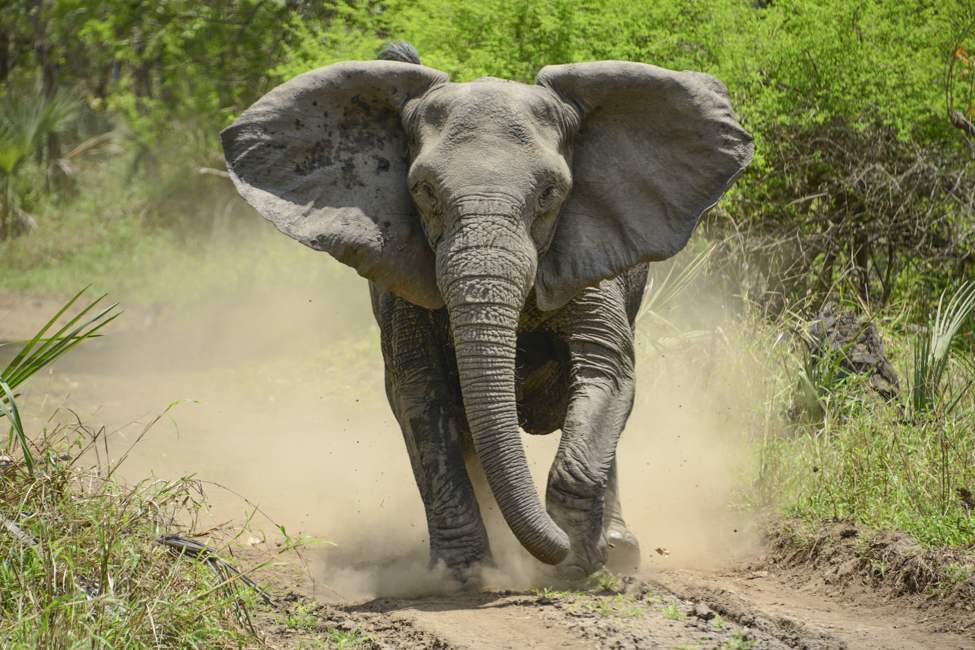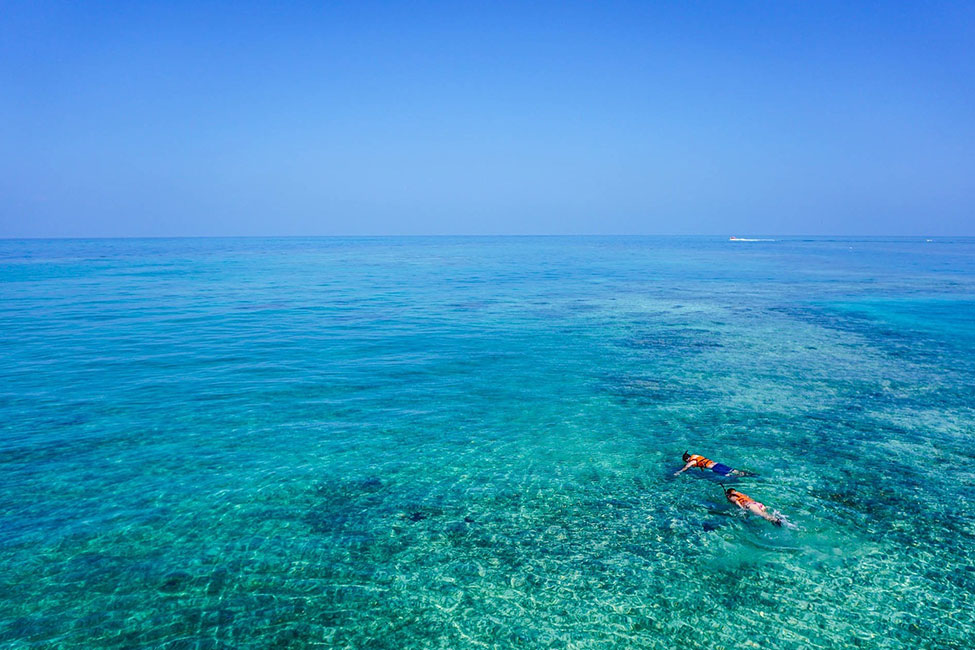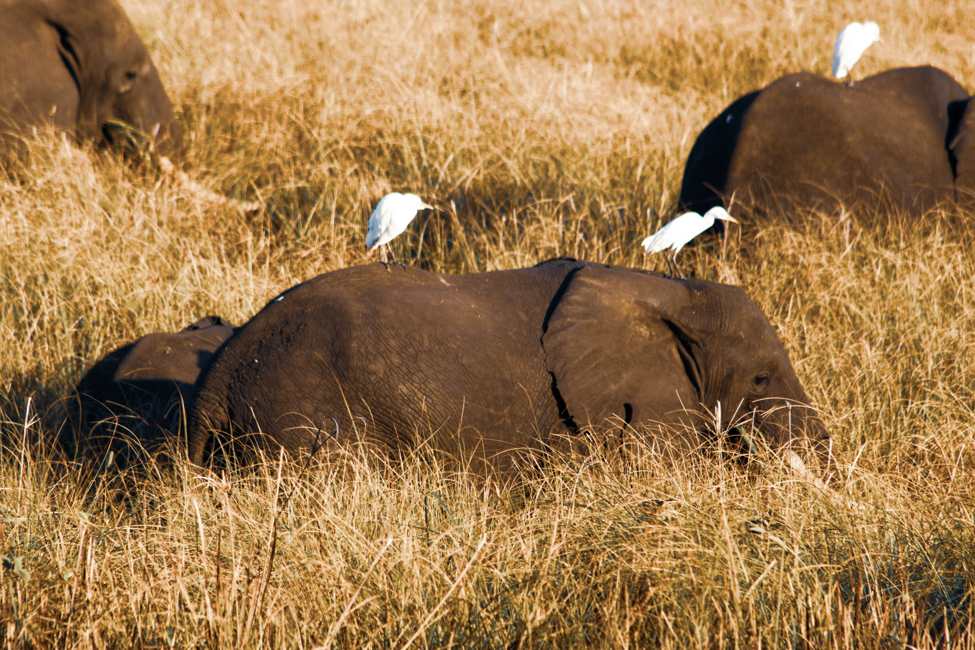Gorongosa Park’s Conservation Success Story
Located in the heart of Mozambique, Gorongosa National Park teems with wildlife. Seasonal floods enrich the soil and attract migrating animals. Thanks to the diversity of habitats contained within the park’s 1,570 square miles, you can find an impressive array of animals at Gorongosa, including more than 400 species of birds.
Visitors can spend weeks at Gorongosa and still find something new every day. Different animals live in each of the park’s ecosystems. These include sprawling savannas, rare sand forest, lush rainforest, tropical grasslands, and montane and riverine forests. You may see giraffes, lions, crocodiles, hippos, chameleons, elephants, and a variety of antelopes.
This abundance is supported by waters that flow into the park from Mount Gorongosa to the west and the Cheringoma Plateau to the east. The park’s largest lake, Lake Urema, expands from its dry-season low of 10 square miles to cover up to 200 square miles in the rainy season.

A lion feasts on an antelope in Gorongosa National Park. Photo by Judy Gallagher.
Reborn from Ashes
Gorongosa has not always been so idyllic. Established as a national park in 1960, the park’s protected status was short-lived. In the 1970s, a civil war broke out. As the war threw people into increasing poverty, they turned to the park for resources. The elephant population, once in the thousands, dwindled to just 200 by the war’s end in 1992. (Both sides slaughtered them and sold their ivory to fund their efforts.) Other animals, such as zebras and wildebeest, were widely hunted for food. Predators such as leopards vanished as their prey disappeared.
Since then, the park has risen from the ashes. African wild dogs, Cape buffalos, zebras, and hippos have returned. The population of elephants is now around 800 individuals, a four-fold increase from the end of the war. Endangered pangolins also appear to be multiplying. Large herbivores such as giraffes, waterbucks, bushbucks, kudus, impalas, and nyalas now number more than 100,000. The petite oribi antelope, which is rare in most of Africa, is fairly easy to find in Gorongosa.
This renewal is largely thanks to work by the Gorongosa Project, a partnership between the Mozambican government and the U.S. philanthropist Gregory Carr. The project takes a holistic approach to conservation through ecosystem restoration, community development, research, and education—even creating a master’s in conservation biology program to enable Mozambicans to better protect their nation’s resources.
Since the Gorongosa Project began in 2004, researchers have discovered more than 100 plant and animal species previously unknown to science. That includes 25 species found only within the park’s boundaries!
Explore Mozambique on These Safaris
When to Visit Gorongosa National Park
As one of Africa’s most biodiverse parks, Gorongosa is well worth a visit. Gorongosa National Park is open from April through mid-December each year, then closes for the rainy season. The weather is mild with little rain from May through August, and hot with light rains in April, November, and December.
Birders will want to visit in April or May, when plentiful waters attract migrants. Plant lovers may enjoy September and October, when flowers burst into bloom.

An elephant kicks up dust at Gorongosa National Park.
Explore Gorongosa National Park!
You can explore the park in a number of ways. Walking safaris and game drives are popular. You can also take a boat cruise on Lake Urema, canoe down the Pungwe River, or bike to local communities.
Lodging at the park includes private villas and bungalows. For those who want to go further off the beaten path, fly camping is also available.
Want to learn more about visiting Gorongosa National Park? Contact Ujuzi African Travel today!
Sign up for the Ujuzi Newsletter!
From top travel tips to innovative safaris and conservation movement, get inspired to plan your next African safari!
By submitting this form, you are consenting to receive marketing emails from: . You can revoke your consent to receive emails at any time by using the SafeUnsubscribe® link, found at the bottom of every email. Emails are serviced by Constant Contact







